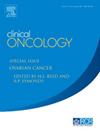Contemporary Long-term Survival Outcomes and Prognostic Factors in Adult grade 4 Astrocytoma: An Institutional Analysis
IF 3.2
3区 医学
Q2 ONCOLOGY
引用次数: 0
Abstract
Aims
Astrocytoma grade 4 without isocitrate dehydrogenase (IDH)-based characterisation has been called glioblastoma (GBM) in historical cohorts. There have been significant advancements in diagnostic radiology and pathology, and in the technical aspects of surgery, radiation therapy, and temozolomide (TMZ) used for treatment of this disease. We analysed the outcomes of 267 adult astrocytoma grade 4/GBM patients, consecutively treated between December 2010 and November 2018 using modern techniques at our institute.
Materials and methods
All patients underwent surgical resection, histopathology review, and O6-methylguanine-DNA methyltransferase (MGMT) methylation testing, volumetric modulated arc therapy (VMAT)-based radiation therapy using institute-specific target-delineation guidelines and image guidance, and TMZ according to Stupp protocol. Serial multiparametric magnetic resonance imaging–based follow-up ensured early detection of disease progression. Appropriate salvage therapy was determined based on clinicopathological attributes. Kaplan-Meier survival plots, log-rank test, and Cox regression analysis were performed on the prospectively recorded dataset to estimate survival and the factors affecting it.
Results
At a median follow-up of 72 months, the median progression-free survival (PFS), 1-year PFS, and 2-year PFS were 10 months, 37.8%, and 17.5%, respectively. MGMT-methylation, a radiation dose ≥54 Gy, and ≥4 adjuvant TMZ cycles were associated with favourable PFS. Median overall survival (OS), 2-year OS and 5-year OS were 24 months, 48%, and 18%, respectively. MGMT-methylation and 1-year disease control were associated with favourable OS. Salvage treatment could be offered to 69.2% patients, with use of all the three treatment modalities in 12.4%. Salvage reirradiation could be used in 30.8% patients. Haematological toxicity ≥grade 2 was evident in 6% patients during concurrent radiation-TMZ phase and in 9% patients in adjuvant TMZ phase. Postradiation neurocognitive deficits were noted in 20.1% patients, with onset at a median duration of 10 months.
Conclusion
Modern diagnostic and therapeutic techniques affected a near-doubling of survival and acceptable late toxicity, as compared to historical data.
成人4级星形细胞瘤的当代长期生存结果和预后因素:一项制度分析
目的:在历史队列中,无异柠檬酸脱氢酶(IDH)特征的4级星形细胞瘤被称为胶质母细胞瘤(GBM)。在诊断放射学和病理学方面,以及在手术、放射治疗和用于治疗该疾病的替莫唑胺(TMZ)的技术方面取得了重大进展。我们分析了267名成人星形细胞瘤4级/GBM患者的结局,这些患者于2010年12月至2018年11月在我们研究所使用现代技术连续治疗。材料和方法所有患者均接受手术切除、组织病理学检查、o6 -甲基鸟嘌呤- dna甲基转移酶(MGMT)甲基化检测、基于体积调节弧治疗(VMAT)的放射治疗,采用研究所特异性靶标描绘指南和图像指导,并根据Stupp协议进行TMZ治疗。基于连续多参数磁共振成像的随访确保了疾病进展的早期发现。根据临床病理特点确定合适的抢救治疗。对前瞻性记录的数据集进行Kaplan-Meier生存图、log-rank检验和Cox回归分析,以估计生存率及其影响因素。结果中位随访72个月,中位无进展生存期(PFS)、1年PFS和2年PFS分别为10个月、37.8%和17.5%。mgmt -甲基化、辐射剂量≥54 Gy和≥4个辅助TMZ周期与良好的PFS相关。中位总生存期(OS)、2年OS和5年OS分别为24个月、48%和18%。mgmt -甲基化和1年疾病控制与良好的OS相关。69.2%的患者可以进行抢救治疗,12.4%的患者同时使用三种治疗方式。抢救性再照射率为30.8%。6%的患者在同时放射-TMZ期和9%的患者在辅助TMZ期的血液学毒性≥2级。20.1%的患者出现放射治疗后神经认知障碍,发病中位持续时间为10个月。结论:与历史数据相比,现代诊断和治疗技术影响了近两倍的生存率和可接受的晚期毒性。
本文章由计算机程序翻译,如有差异,请以英文原文为准。
求助全文
约1分钟内获得全文
求助全文
来源期刊

Clinical oncology
医学-肿瘤学
CiteScore
5.20
自引率
8.80%
发文量
332
审稿时长
40 days
期刊介绍:
Clinical Oncology is an International cancer journal covering all aspects of the clinical management of cancer patients, reflecting a multidisciplinary approach to therapy. Papers, editorials and reviews are published on all types of malignant disease embracing, pathology, diagnosis and treatment, including radiotherapy, chemotherapy, surgery, combined modality treatment and palliative care. Research and review papers covering epidemiology, radiobiology, radiation physics, tumour biology, and immunology are also published, together with letters to the editor, case reports and book reviews.
 求助内容:
求助内容: 应助结果提醒方式:
应助结果提醒方式:


